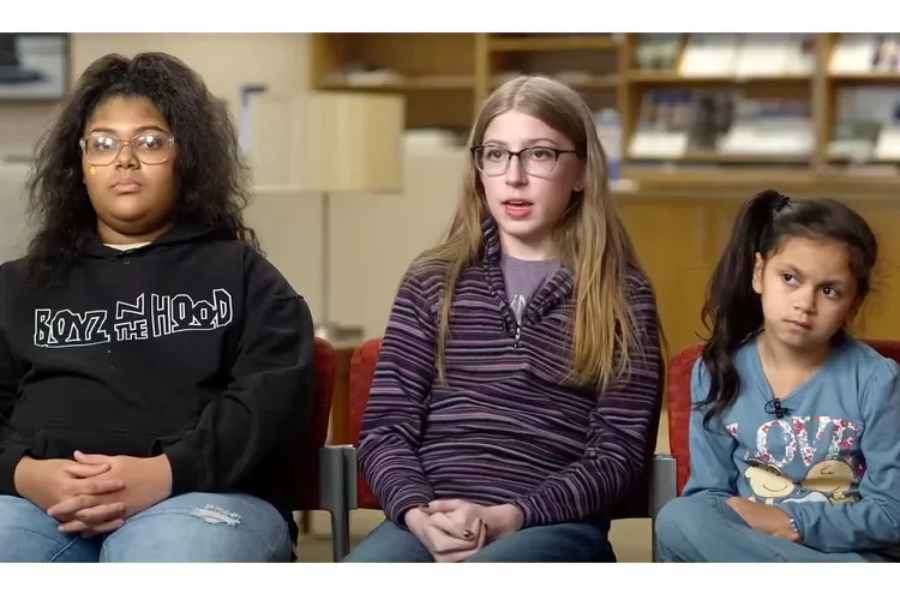In an unprecedented medical breakthrough, three young girls have been given a new chance at life thanks to a single donor heart and a series of pioneering surgeries performed at Duke Children’s Hospital. The procedures, hailed as “groundbreaking” by surgeons, involved a heart transplant and the successful reuse of heart valves to save two additional children — a feat never before accomplished in pediatric cardiac care.
The story began when 11-year-old Journi Kinsey was admitted to the hospital in late 2024 with severe stomach pain that quickly escalated into a life-threatening condition. According to her mother, Rachel Kinsey, her daughter collapsed, prompting an urgent medical evaluation that revealed advanced heart failure. Tests showed Journi’s heart was functioning at only 12% capacity.
“She was pretty much plugged into every machine,” Rachel Kinsey told the Today Show, describing the harrowing days that followed her daughter’s diagnosis.
Journi was immediately placed on a ventricular assist device and added to the national transplant list. Less than three weeks later, the Kinsey family received a call in the middle of the night — a donor heart had become available.
Following the transplant, Duke surgeons approached the Kinsey family with an innovative proposal. Although Journi’s heart had failed as a whole, parts of it — specifically the mitral and pulmonary valves — remained viable and could be used in other life-saving procedures. With the family’s consent, surgeons set out to perform a series of unprecedented operations.
One of the recipients of Journi’s heart valves was 14-year-old Margaret Van Bruggen, who had developed endocarditis, a bacterial infection that severely damaged her heart’s mitral valve. The infection caused multiple holes in the valve, rendering it beyond repair.
“I had three holes instead of one,” Margaret said. “That’s when the doctors told me I needed a new valve — there was almost no way they could fix it.”
Using Journi’s healthy mitral valve, surgeons performed what is believed to be the first-ever living mitral valve transplant in a pediatric patient. Dr. Joseph Turek and Dr. Douglas Overbey, leading pediatric heart surgeons at Duke Children’s Hospital, carried out the complex procedure.
“It’s incredibly groundbreaking,” said Dr. Turek. “This could revolutionize how we approach pediatric valve replacement surgery, especially for children who are too small for mechanical alternatives.”
A second patient, 9-year-old Kensley Frizzell, was born with a narrow aortic valve and underwent heart surgery shortly after birth. At one month old, she received a pig valve as a temporary measure. However, doctors had long warned her family that as she grew, the valve would need replacement.
In recent months, Kensley’s health had begun to decline, prompting discussions about either a mechanical valve or a heart transplant. Journi’s pulmonary valve offered a critical third option — and a perfect fit.
“It’s more than extraordinary,” said Kensley’s father, Kenan Frizzell. “It’s a blessing. One heart saving three kids — that’s something we never imagined possible.”
All three surgeries were conducted in quick succession by the Duke surgical team. Journi received her new donor heart, Margaret underwent the mitral valve transplant, and Kensley had her pulmonary valve replaced — each operation performed with precision and hope.
“This is not just a story of individual miracles,” Dr. Overbey explained. “It’s a paradigm shift in how we think about pediatric transplants and the potential of every donated organ.”
According to the surgeons, the ability to reuse heart valves from one transplant recipient to help others could significantly expand the impact of pediatric heart donations, potentially saving thousands of young lives in the future.
All three girls are now recovering well and are expected to return to normal childhood activities in the coming months. Journi is regaining her strength after her transplant, Margaret has resumed school and hobbies, and Kensley is enjoying renewed energy and health.
“I’m grateful,” said Margaret’s mother, Elizabeth Van Bruggen. “We went from fearing the worst to seeing our daughter smile again.”
For Rachel Kinsey, whose daughter became both a recipient and a donor in this historic case, the experience has been deeply moving.
“Everything lined up perfectly,” she said. “From receiving a heart to being able to give part of her old one to help two other children — we can’t thank the other donor family enough. And we’re grateful our child could, in turn, help others.”
The success of the surgeries marks a significant moment in pediatric cardiac medicine. Typically, heart valve replacements in children rely on mechanical valves or animal tissue, both of which come with complications and the need for future replacements. The use of human donor valves from another child not only reduces those risks but offers better compatibility and longevity.
“Think about how many kids are waiting for valves, not necessarily full hearts,” said Dr. Turek. “This model could allow us to make one donor heart go even further — potentially helping two or three more children each time.”
Duke Health is now studying the long-term outcomes of this approach and hopes to expand its use in pediatric cardiac centers nationwide.
The Kinsey, Van Bruggen, and Frizzell families have since become vocal advocates for organ donation awareness, urging others to consider registering as donors — especially for children.
“It’s humanity at its best,” said Rachel Kinsey. “It’s the power of one gift, multiplied.”
As these three young girls move forward with a new lease on life, their shared story serves as a powerful reminder of medical innovation, family courage, and the life-saving impact of organ donation.
